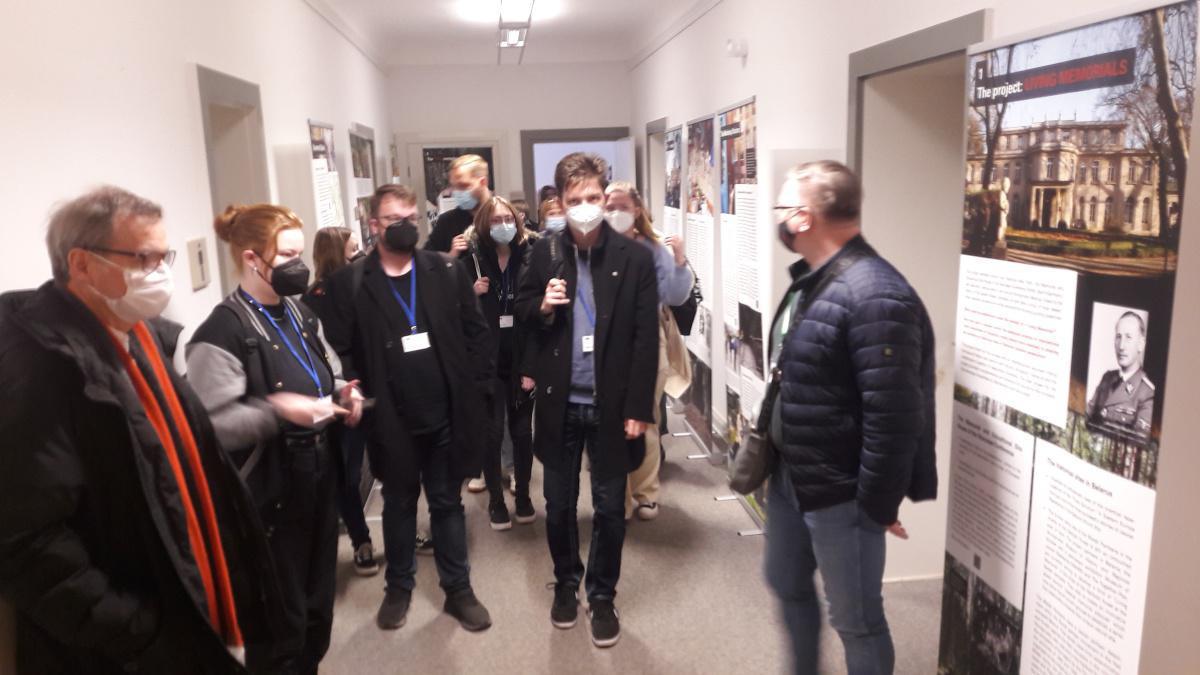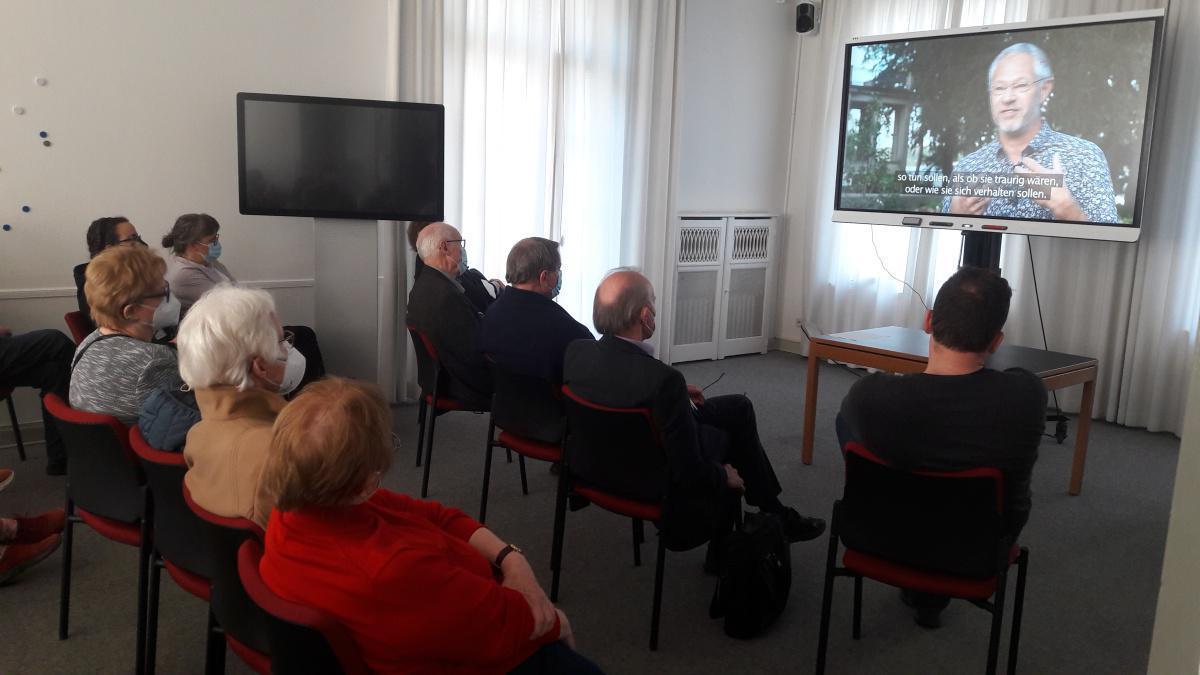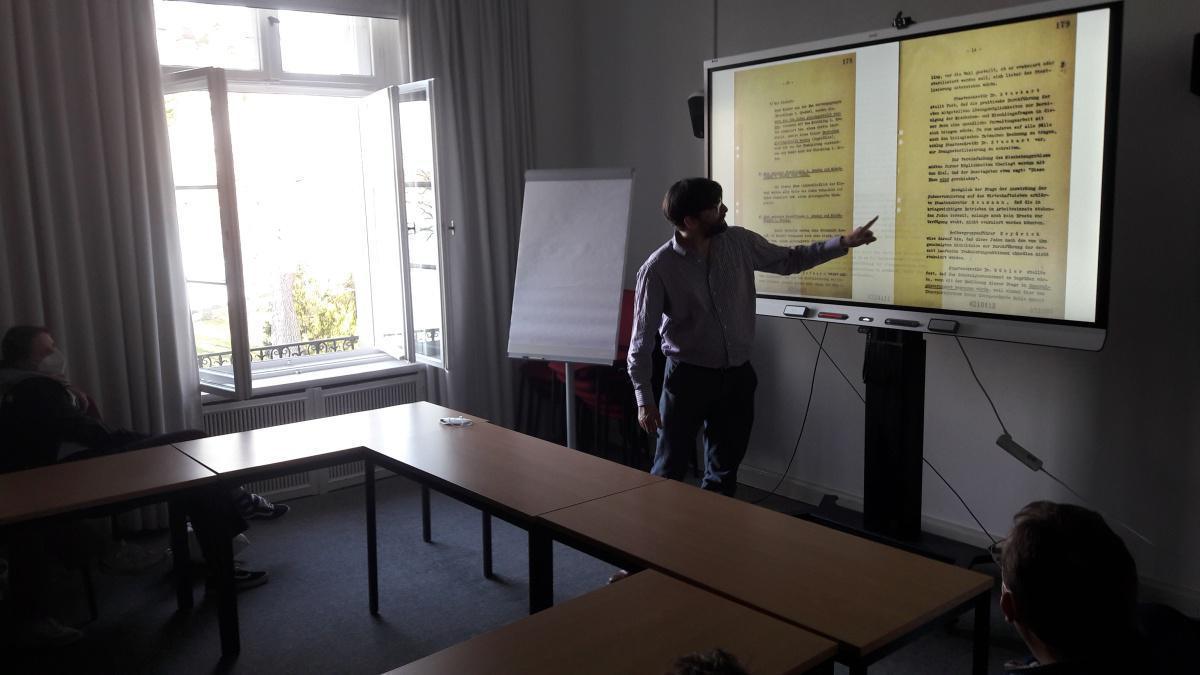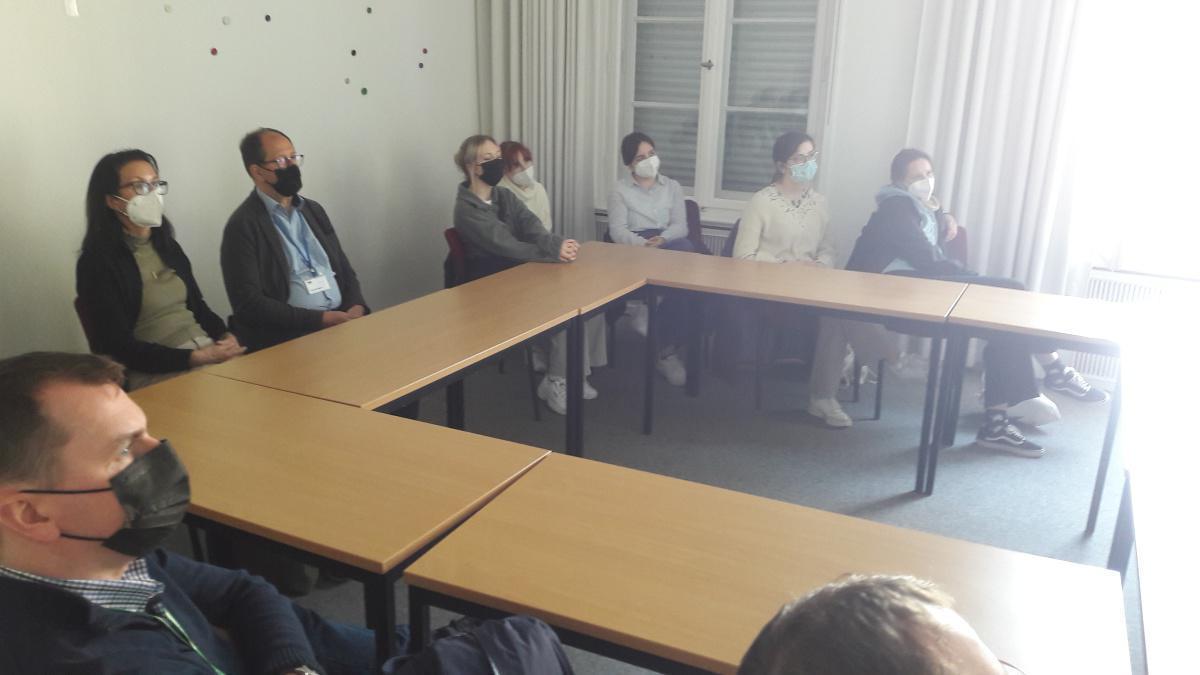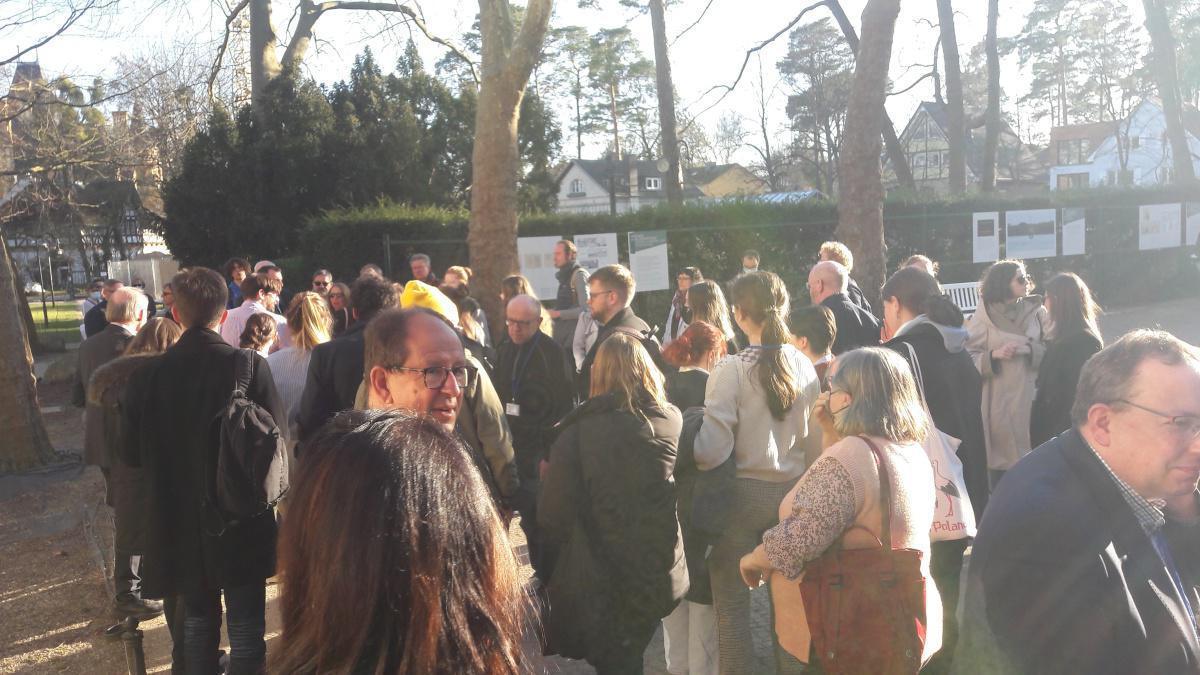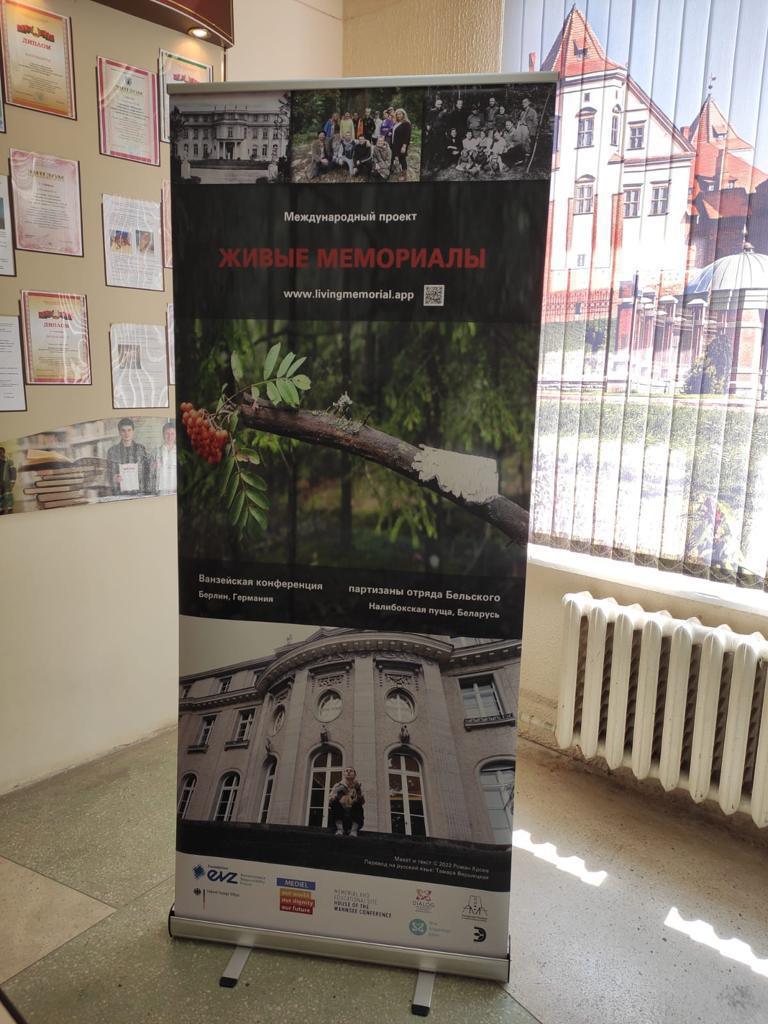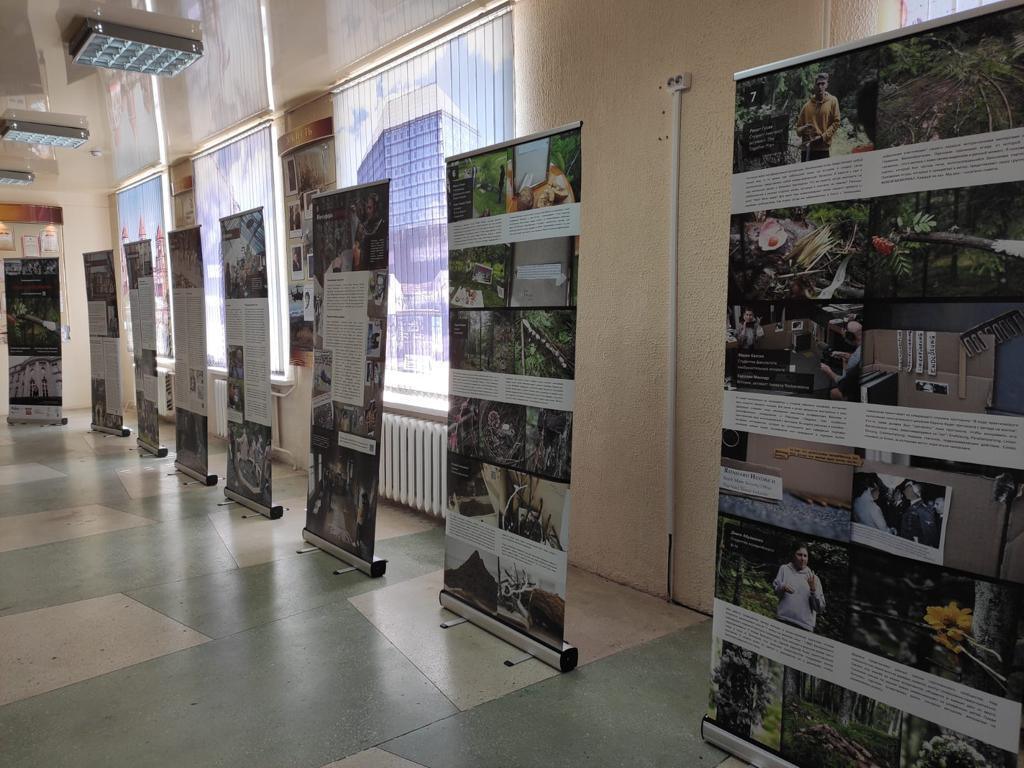Two exhibitions of the results of the Living Memorials project took place: in the Memorial and Educational Site House of the Wannsee Conference (Berlin/Germany) between March and May 2022 and in Belarus (Minsk, Novogrudek) during the Summer 2022. The exhibitions were curated by Roman Kroke (Pedagogical and Artistic Coordinator of the Project).
The panels of the exhibition are available for download in the PDF.
These panels are available on request if you wish to organize an exhibition on this theme in your school, your association... Use the contact form to send your request.
Exhibition in Berlin (Germany)
The exhibition and the film create a kind of complementarity. The exhibition shows facts, contextualises the conference, develops the itineraries of its protagonists (some of whom are living surprisingly long lives). The film takes a diversion through art. And this side step adds a sensitive dimension to the facts, which may not explain them, but perhaps helps us understand them, at least a little. Bruno CARLIER, Professor of History, Lille University (France)
The visit to the house in Wannsee was a real eye-opener. The exhibition shines a bright, uncompromising light on the inner workings and thinking at the heart of the Third Reich. André Bossuroy’s remarkable film takes things further, using Wannsee as the starting point to explore the lived experience of the ‘Final Solution’, through expert analysis, first-hand accounts and personalised artistic creation. The film skillfully brings together art, history and remembrance. Michael LAVIN, visitor and artist, Villeneuve d'Ascq (France)
The film Living Memorial introduces the human element into the place where the "treatment" of the European Jews, the exclusion of their lives, was decided administratively. In contrast, the film shows the inclusion of people today who remember and work in sympathy in creative workshops. Two experiences are present around Roman Krohe's initiative. The first one in Wannsee to get rid of the preconceived ideas about this place, the second one in the Naliboki forest, 150 kilometres from Minsk in Belarus, place of the museum of Jewish resistance, a maquis and a refuge created by the Bieski family. At the villa, the photos become metaphors. They try to understand what might have been going on in the minds of these 1942 executioners, whose strange normality of work as conscientious civil servants raises questions about exclusion. Promoting responsible citizenship means integrating participants to make a cardboard circle, a symbol of integration. Signs on the trees in the park show a violent contrast between the correct appearance (of the civil servant) and the rottenness of the (Nazi) spirit. The trees in the Naliboboki forest form a network and a symbol of the life that was saved there. The participants in the creative workshops use only elements of nature, leaves, branches, straw and rye ears. Here it is the forest itself that is a place of memory: the tree is a metaphor for life, for the 1200 people who were saved there. Sylvain CALONNE, President of Société historique de Villeneuve-d’Ascq (France)

